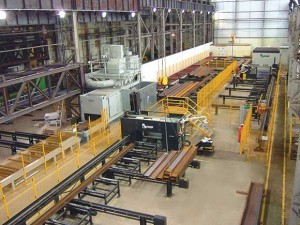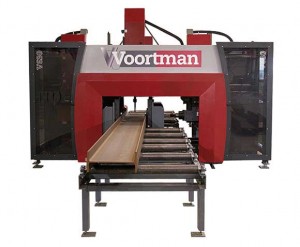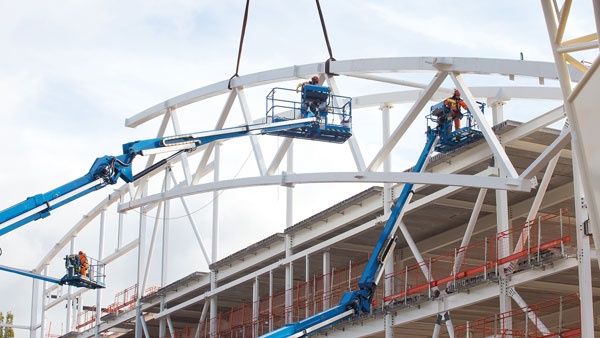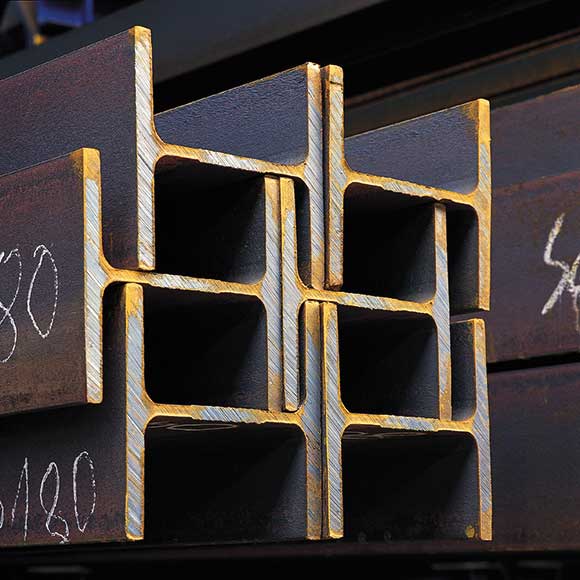Profile
Machinery investment boosts quality
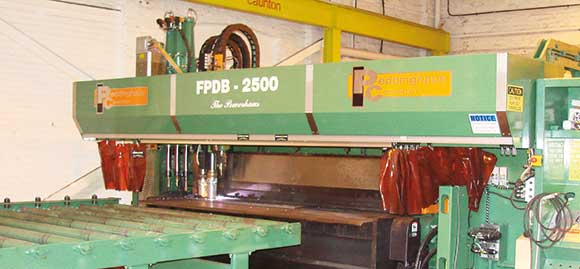
A Peddinghaus FPDB-2500, a plate machine with punching, drilling and marking capabilities along with plasma and oxy cutting options.
Advances in quality and productivity in the steel construction sector are to a large part due to developments in fabricating machinery. The last of our Supply Chain series explains the role of the equipment manufacturers.
Manufacturers of steelwork fabrication equipment have invested heavily in research and development to produce the technological advances required by today’s steel construction sector.
Thanks to this continuous improvement, state-of-the-art machinery has been made available from international manufacturers that has helped the UK’s steel construction sector improve productivity and efficiency to become the envy of the world.
The last 15 years or so in particular has been marked by continual investment in new technology by the UK steel construction sector, making it the most efficient producers of ready to erect structural steel in the world. A steady flow of new machine introductions continue to give steelwork contractors efficiency gains, which are essential to succeed in a very competitive market.
Whether a company needs a saw, drill, punch and shearing line, profiler, coper or a combination of the aforementioned, today’s fabrication equipment is easier to use than previous generations and offers greater productivity with a wider possible throughput of materials.
Other important processes include shot blasting, for clean preparation of steel, and auto painting, which is usually fully integrated as a follow on in-line process from shot blasting. Major steelwork contractors and key structural steel stockholders have shot blast and auto paint lines.
Sawing and drilling are fundamental to structural steel processing, usually in series with a shot blast and auto paint line and often with a coping process. Modern systems are totally integrated and physically linked by conveyors and crossways and controlled by machine specific and total system software.
Manufacturers are continually developing their products and one of the most significant advances has been in controls. Modern electronic controls have made machinery easier to use and, along with computer technology, huge advances have been made.
For instance, bandsaw technology has improved with touch-screen user friendly input and down-the- line machine instruction capabilities, which have refined process control and efficiency. Significant improvements in bandsaw blade technology have resulted in faster precision sawing and more throughput.
Computer Numerically Controlled (CNC) machinery is the standard today and offers a number of advantages. It is more effective with: single end cuts, arranged square to the member length, which eliminates the set up time that would be needed when changing to another angle or cut; one hole diameter on any one piece, which avoids the need for drill bit changes; and alignment of holes on an axis square to the member length, holes in webs and flanges aligned, which reduces the need to move the member between drilling operations.
Ficep (UK) Ltd
Peddinghaus Corporation UK Ltd
Voortman UK Ltd
Drilling machines are an essential item for the steel fabrication sector. A major advance for these machines was the introduction of solid carbide drills. Using carbide throughout the working length of a drilling bit allows much faster cutting speeds and greater forces, typically achieving a 300% advance over TCT (Tungsten Carbide Tipped) drills and 500% improvement over HSS (High Speed Steel) drills. Solid carbide is also economical as it enables numerous re-sharpening of the bit.
As an alternative to purchasing individual machines, there has been a trend over the last year or so for complete lines to be produced and installed at steel fabrication facilities. Manufacturers say this is the best means of achieving the most efficient, fully integrated process and control solution.
After sales is another area which has seen a number of advances in recent times. Once
a customer has invested in a new machine or processing line, it wants to be sure it works and continues to work properly. To this end manufacturers employ more technicians to help with after sales and service contracts.
In addition to the standard warranty which comes with any new piece of machinery, manufacturers also offer a range a service contracts. The basic elements of each contract usually include the servicing of machines, restoration of factory settings, reduction in the cost of spare parts and a full service history for the machine.
Not only do such contracts provide customers with peace of mind, but they also have the option of deciding exactly what level of service they require, allowing the servicing costs to be accurately budgeted in advance.
Remote diagnostics is now integral as it allows technicians and service engineers to repair equipment without actually visiting the fabricator. As long as there is a computer link, a technician can fix an item of machinery from anywhere in the world. This saves time and means repairs are executed faster.
The immediate response made to customers and advanced diagnostic capabilities ensure total support, backed by a wide range of spare parts . Basic spare parts are normally carried by service engineers to ensure machine down-time is kept to a minimum.
Manufacturers also provide a programme of continuous training and manuals as well as software updates which can be easily downloaded via the internet.
Training is an important element for any new piece of machinery. Manufacturers often offer a training programme
for a customer which may also include a visit to the production facility.
This allows the future operative the chance to see the machine being built as well as observing it in full production mode.







